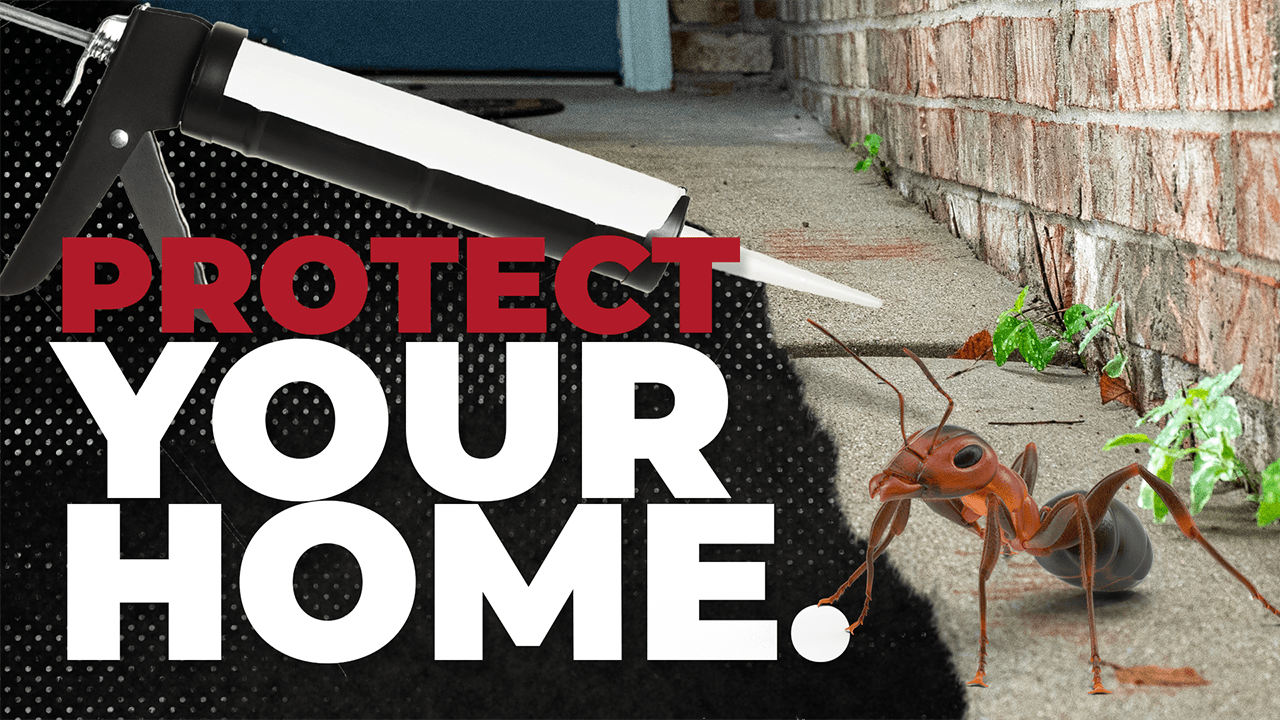Topics:
Search for topics or resources
Enter your search below and hit enter or click the search icon.
Providing your email address will keep you updated should we need to provide updates specific to your location.
August 1st, 2025 | 2 min. read
By Sarah Etler

When left open, the gap between your concrete and your home’s foundation can let in water, pests, and even cause future structural problems.
TL;DR
Sealing the gap where your concrete meets your house helps keep out water, pests, and problems like settling or foundation damage. If the gap isn’t protected, it can lead to costly repairs, so caulking it now can save you big headaches later.
In This Article
Think of that gap where your driveway, porch, or patio meets your foundation as more than just a visual imperfection. It’s a vulnerability.
The gap between a house and concrete allows water to wash under the slab and erode away the base that the slab is sitting on, causing it to settle over time.
Water leaking through the concrete gaps next to a house can even cause water to intrude into a home’s foundation or basement.
Caulking entry points for ants and other pests can help keep their populations down and out of your home.
Caulking, not to be confused with sealing the surface of concrete, fills and seals the gap between concrete and your house with a flexible, water-resistant polymer.
Related Resource: How to Caulk Concrete

If the gap:
…then caulking may not be necessary. But when in doubt, blocking water is usually the safer bet.
Caulk between a house and concrete is there to plug up the gap and prevent water or pests from entering. If it no longer achieves this goal, it’s time to replace it.
Check annually:
In freeze-thaw climates, expect more frequent touch-ups as expansion and contraction take their toll.
Caulking the gaps between your home and concrete as a DIY is possible, but it’s easy to mess up the appearance or miss prep steps that affect longevity.
If you want a clean, uniform look or just peace of mind that it’s done right, it’s smart to get a quote from a professional.

If you’ve got gaps where your concrete meets your home, don’t wait. The longer water has a path under your slabs, the more damage it can do.
A-1 Concrete Leveling can help you get ahead of the damage, with a clean, professional caulking job that’s built to last.
Request your Free Estimate today.
Flexible concrete caulk is best as it forms a waterproof seal that moves with the expansion and contraction of the concrete.
Yes, backer rod is recommended for cracks wider than ½ inch and at least an inch deep. It helps reduce the amount of caulk needed and helps improve performance.
Caulking gaps in concrete helps prevent settling by blocking water intrusion and erosion. It will not completely prevent settling on its own if there are additional drainage issues at play.
Related Resource: How Water Affects Concrete: Downspouts, Gutters & Runoff
Sarah Etler joined A-1 Concrete Leveling after receiving her Bachelor of Arts degree in English from Northern Kentucky University. As A-1's Content Marketing Manager, she works closely with industry experts to produce content that will best answer questions related to concrete repair and maintenance practices. Sarah loves living a life full of discovery and is excited every day to see what new things she can learn and share with those around her.
Topics: